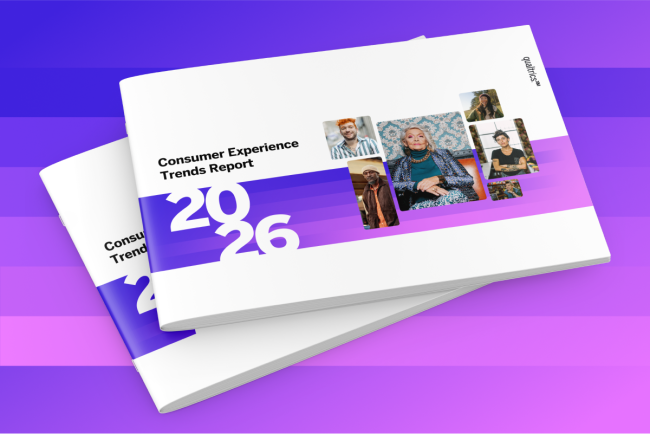The 2025 Federal Summit brought together government leaders to address the critical challenges facing federal operations today. From AI adoption to workforce resilience, the conversations revealed both the urgency of modernization and a clear path forward. Here are four essential takeaways that can guide your agency's transformation efforts.
Transform service delivery: From firefighting to foresight
The challenge: Citizens expect government services to work regardless of staffing levels, however, organizational changes are creating service breakdowns across multiple channels. When problems aren't detected early, small issues can turn into larger issues that depress citizen satisfaction and damage the agency’s reputation.
The opportunity: Agencies are transforming their approach by capturing insights across every citizen interaction, from digital self-service portals to contact centers, through omnichannel listening strategies. This means using that data to proactively fix problems before they impact service quality, rather than waiting for complaints to surface.
Key actions:
- Break down silos between different feedback tools to create one source of truth for service insights
- Identify problems as they happen, not after citizens have already experienced poor service
- Set up automatic workflows that trigger immediate responses when service issues are detected
The results: When agencies adopt this approach, they typically see lower costs to serve, more citizens successfully helping themselves online, and higher satisfaction scores across all service channels.
Optimize technology resources: Smart consolidation
The reality: Accountability has sharpened, and agencies are facing mounting pressure to show measurable return on investment and cut overlapping spend. Every technology dollar needs a verdict now–reduce, replace, or retain.
The solution: Technology consolidation isn't just about cost savings. It's about creating more effective, secure systems that actually work better for users. Forward-thinking agencies are replacing multiple point solutions with comprehensive platforms that serve more functions while reducing technical debt and improving operational efficiency.
Key strategies:
- Build enterprise AI governance frameworks that enable responsible innovation while maintaining security within FedRAMP High boundaries
- Ensure data quality is solid before adding new analytics tools, since poor data limits any technology investment
- Drive technology choices based on what users actually need rather than vendor capabilities
Security advantage: With FedRAMP High authorization now available for the full XM Platform, agencies can confidently adopt AI responsibly within a robust government security framework, advancing innovation.
Modernize research: Translate insights into immediate action
The challenge: Traditional research methods often require weeks or months to deliver actionable insights, which prevents agencies from responding quickly to emerging challenges, policy changes, and citizen needs. Many agencies also struggle with resource-intensive processes and vendor dependencies.
The innovation: Modern research capabilities are changing how agencies gather and act on data insights. New approaches, including synthetic data methodologies and automated workflows, allow teams to move faster, reach more people, and maintain compliance-grade quality standards.
What's possible:
- Combine traditional human research with simulated populations to optimize both speed and accuracy
- Access previously hard-to-reach audiences without lengthy recruitment processes
- Move from periodic research projects to continuous insight generation that supports agile decision-making
Smart implementation: Begin with low-risk, high-value projects, like experimental study design testing, where speed provides clear operational advantages. Focus on research that directly supports mission-critical decisions, and always validate findings against real-world outcomes.
Empower the workforce: Building resilience through feedback
The challenge: Government employees face unique pressures during times of organizational change, and the Federal workforce has been deeply disrupted since January 2025. Organizational leaders face a historically unique combination of helping current employees adapt to abrupt workforce downsizing, identifying and recruiting new talent to fill immediate and future skills gaps, and preparing for the growing adoption of AI as a partner to human workers.
The solution: Leaders can protect themselves and their employees through these disruptions by adopting an optimistic mindset that focuses relentlessly on the opportunities that come from change. Leaders must use all available channels to continuously listen and communicate with their employees, being transparent about what they don’t control, and focusing on specific actions they can take to support the team. This shift toward positive action will model for team members how to move from reacting to disruption, to embracing the opportunities that come with it.
Core strategies:
- Implement continuous feedback collection to capture real-time employee sentiment and workplace dynamics
- Provide managers with actionable insights and recommendations based on what their teams actually say
- Involve employees in designing their ways of working - including adopting AI and automation solutions - to instill a sense of ownership and accountability
- Communicate transparently about what you know and what you don't during periods of uncertainty
Compliance note: With the cancellation of FEVS this year, agencies have the opportunity to use their own survey platforms to administer FEVS themselves. By managing FEVS at the agency level, leaders can drive results directly to front line managers for insights and actions on how to support employees during times of continued disruption.
Your path forward
The Summit reinforced that successful transformation requires an integrated approach to experience management. Rather than treating these as separate initiatives, the most effective agencies capture insights from both citizens and employees, then use those insights to drive automated actions and measurable improvements across all operations.
Start here:
- Evaluate your listening strategy: Are you capturing comprehensive feedback across all service channels, or do critical gaps exist in your data collection?
- Review technology consolidation opportunities: Which redundant systems could be unified on a single platform to reduce costs and improve efficiency?
- Explore research acceleration: Where would faster, more agile insights significantly improve your decision-making speed and quality?
- Build workforce resilience: How can you implement real-time feedback mechanisms that help managers support employees through disruption while identifying opportunities for growth and adaptation?
Leading organizations use unified platforms that address service delivery, technology optimization, research modernization, and workforce empowerment simultaneously. This approach enables agencies to reduce costs while improving service quality, consolidate technology investments while enhancing user experiences, and build workforce resilience while driving accountability.
Bottom line: Success requires moving from fragmented tools toward comprehensive platforms that can capture, analyze, and act on feedback across every aspect of government operations. The technology exists today to make this transformation possible. The key is beginning with a clear strategy that aligns technology investments with mission outcomes.
Ready to explore how unified experience management can accelerate your agency's transformation? Connect with our federal team to discuss your specific priorities and discover how other agencies are achieving measurable results.



